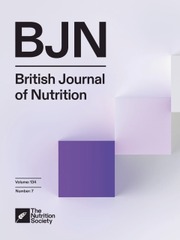No CrossRef data available.
Article contents
Associations of subjective sleep patterns and social jet lag with weight loss and dietary intake in bariatric surgery patients: a 1-year follow-up study
Published online by Cambridge University Press: 24 February 2025
Abstract
Current literature has shown that poor sleep patterns and social jet lag (SJL) are associated with obesity and weight gain. However, this area remains underexplored in patients who have undergone bariatric surgery. We hypothesised that higher levels of SJL and poorer sleep patterns are associated with lower weight loss, greater caloric/nutrient intake and poorer metabolic outcomes following surgery. This study aims to assess the associations of SJL and subjective sleep with anthropometric, metabolic and dietary parameters during the first year following bariatric surgery. SJL, sleep quality and daytime sleepiness were measured in 122 patients (77 % women; median age 33·0 [28·0 – 41·7]). SJL was estimated by the absolute difference between the midpoint of sleep and wake times on weekdays and weekends. Daytime sleepiness and sleep quality were evaluated using the Epworth Sleepiness Scale (Epworth) and the Pittsburgh Sleep Quality Index, respectively. Multiple linear regressions were employed to evaluate the associations of SJL, sleep quality and daytime sleepiness with weight loss, metabolic and dietary outcomes. Independent variables were negatively associated with weight loss after surgery: SJL at 6 months and 1 year; sleep quality at all time points and sleepiness after one year (P < 0·05). SJL was positively associated with calorie and protein intake after 1-year post-surgery (P < 0·05). Our results show that higher SJL and poorer sleep patterns are associated with worse anthropometric, metabolic and dietary outcomes after bariatric surgery. These findings reinforce the importance of addressing variables related to biological rhythms to optimise post-surgical outcomes in bariatric patients.
- Type
- Research Article
- Information
- Copyright
- © The Author(s), 2025. Published by Cambridge University Press on behalf of The Nutrition Society



